Written by: Lincoln Murr (Coinbase), Stefano Bury (Virtuals), Rishin Sharma (Solana), Pilar Rodriguez (The Graph), David Mehi (Google Cloud), and Cambrian members Ariel, Brian, Doug, Jason, Ricky, and Tumay
It is expected that the overall ecosystem will continue to mature, and ultimately, using agents will become the mainstream method of financial participation.
Agentic Finance is stepping into a critical explosion point, holding tremendous economic potential for those who leverage smart agents to enhance their financial behaviors. AI agents are a category of autonomous tools that possess data analysis, decision-making, and transaction execution capabilities, with operational methods varying from minimal human involvement to full automation. Currently, these agent tools are being opened to the public, gradually impacting a financial system long dominated by Wall Street and its high-frequency algorithms.
This article focuses on the retail application of agentic finance in 'decentralized finance (DeFi)' and comprehensively reviews the automated agent projects that are already live and focused on serving individual users. To this end, the project team conducted extensive research and interviews with dozens of teams in the industry, ultimately compiling a rigorously selected list of active projects categorized by product type, with annotations for each representative product.
Agentic finance is driving the maturation of the crypto industry, providing real-time information, professional-level advice, and optimizing user experience, making ordinary users' participation in DeFi more efficient and reliable. Here is a structured overview of the current ecosystem:
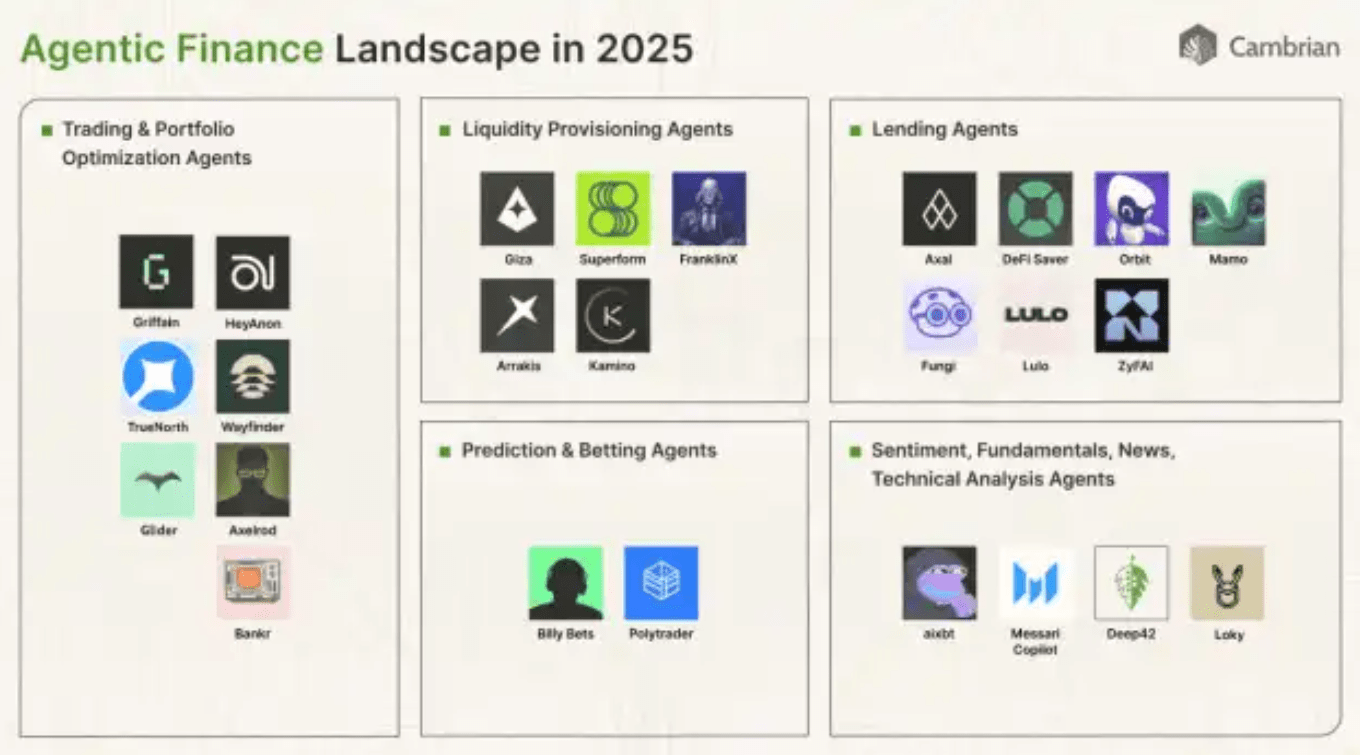
What is Agentic Finance (AgentFi)?
Agentic Finance refers to the emerging category of financial products whose core lies in actively managing user funds using AI or machine learning, or providing personalized financial advice. Some products achieve interaction and analysis through large language models (LLMs), while others rely on rule engines or traditional machine learning algorithms. Despite the varying underlying technological paths, they commonly refer to themselves as 'agentic' products.
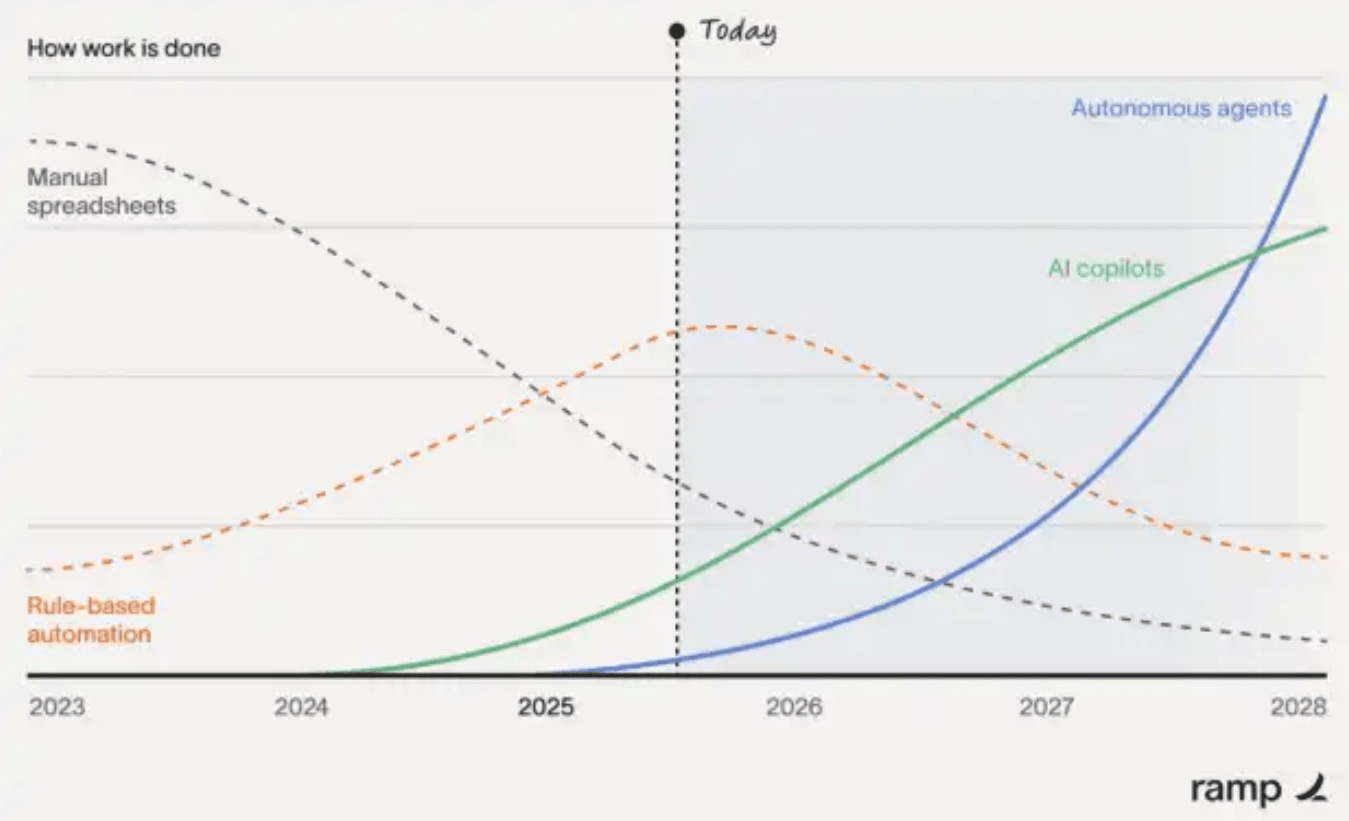
Currently, Agentic Finance is in the innovator stage, still at the starting point of the early adoption curve. Soon, various agents and AI assistants will dominate financial activities.
However, it is foreseeable that in the near future, traders, asset managers, financial analysts, and other professionals will all enhance their efficiency by leveraging dedicated smart agent tools, while automated agent versions aimed at ordinary users will also be launched simultaneously. This trend has already begun to manifest: for example, automated trading robots now account for over half of the trading volume on the Solana network.
Autonomy vs Intelligence: The capability coordinate system of AgentFi
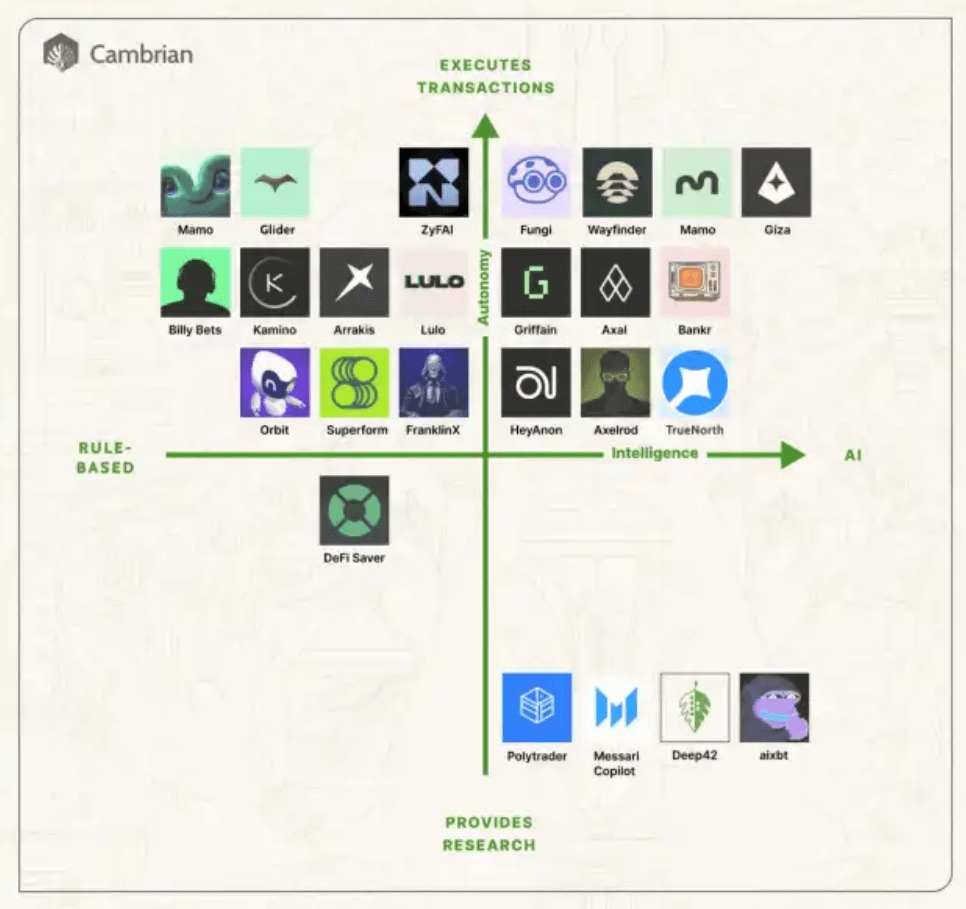
Different Agentic projects are distributed along the 'autonomy - intelligence' coordinate system based on their service scenarios and technological capabilities.
The horizontal axis represents intelligence level: the left side comprises tools based on rules and statistical models, the middle comprises traditional machine learning models, and the right side consists of advanced agents based on large language models (LLMs) or subsequent technologies;
The vertical axis represents autonomy: the bottom represents 'advisory agents' that only provide suggestions and analysis, the top represents 'fully automated agents' with complete decision-making and execution authority, and the middle represents a hybrid architecture of 'Human-in-the-loop.'
When mentioning Agentic Finance, many people think of 'invisible robots' or advanced LLM systems that can automatically trade and independently manage portfolios. However, in reality, such systems have not yet been deployed on a large scale, primarily due to the stability issues that LLMs still face. For example, LLMs can still 'hallucinate' false information and only recently gained basic counting abilities (e.g., counting the number of letter 'r's in 'strawberry'). Currently, most agents only utilize LLMs for human-machine interaction interfaces or data analysis layers, while the fund management portion still mainly relies on mature statistical models or machine learning algorithms, which have been used in traditional finance (TradFi) for decades.
From the development path of LLMs, their weaknesses in handling numbers and logical reasoning have historical reasons—they were initially designed for language prediction. However, this situation is changing rapidly. For instance, Anthropic has launched financial products adopted by institutions, and OpenAI has trained models competitive in the International Mathematical Olympiad.
2025 Agentic Finance Project Panorama
The following is a list of currently live Agentic projects that have fund management capabilities and are open to users. Projects that are in development or internal testing stages are not included, and products that only use LLMs as interfaces but require manual decision-making from users are also excluded, so several projects were not included in this round of review.
Trading and asset allocation agents
Trading agents are the most commonly thought-of agentic financial products. These agents manage user funds by automatically adjusting portfolios or selecting buy/sell assets. To achieve automatic trading, agent systems typically need components such as trading permissions, asset access, budget management, preset strategies, and high-quality data. Below is a list of projects currently supporting one or more functions:

According to a recent poll initiated by Cambrian on the X platform, the majority of users have shown a high interest in high-risk trading agents.


Liquidity provision (LP) agents
Decentralized exchanges (DEX) rely on third-party liquidity providers (LPs) to provide tradable assets, and the transaction fees paid by traders go to the LPs. The earnings of LPs depend on various factors, including impermanent loss, trading volume, DEX protocol incentives, etc. The following agent tools can help LPs identify optimal liquidity allocation paths:
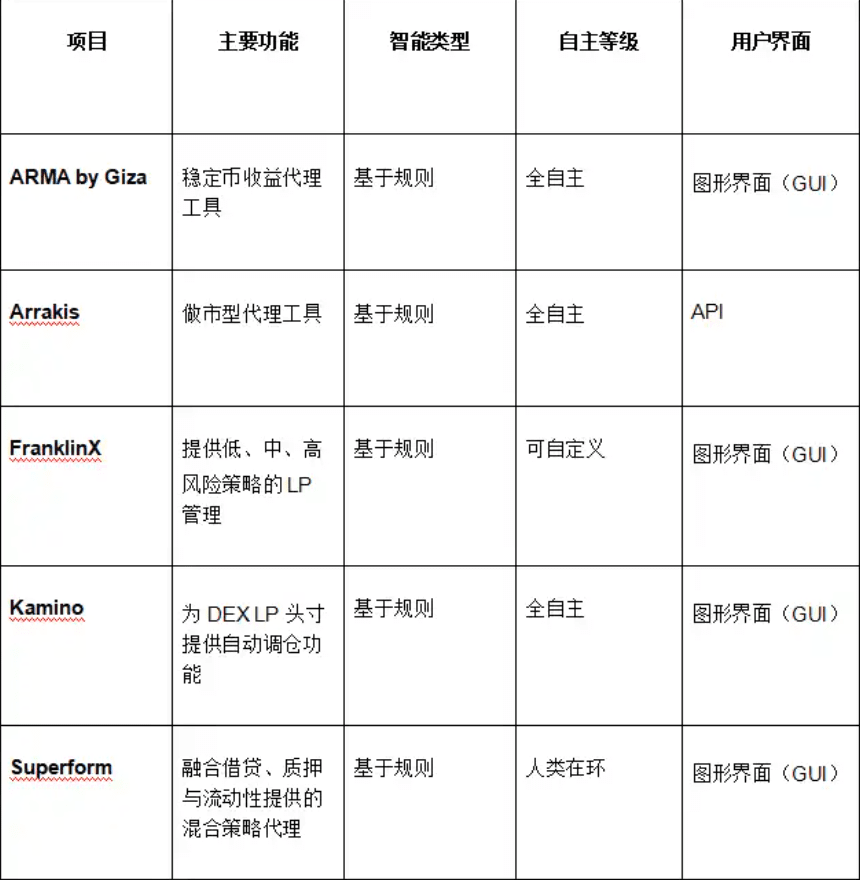
Lending agents
In the crypto market, users can earn interest by providing assets to borrowers. Lending agents typically need to evaluate factors such as yield, risk exposure, and opportunity cost when deciding whether to participate in lending agreements. Below are some lending agent projects that have gone live:
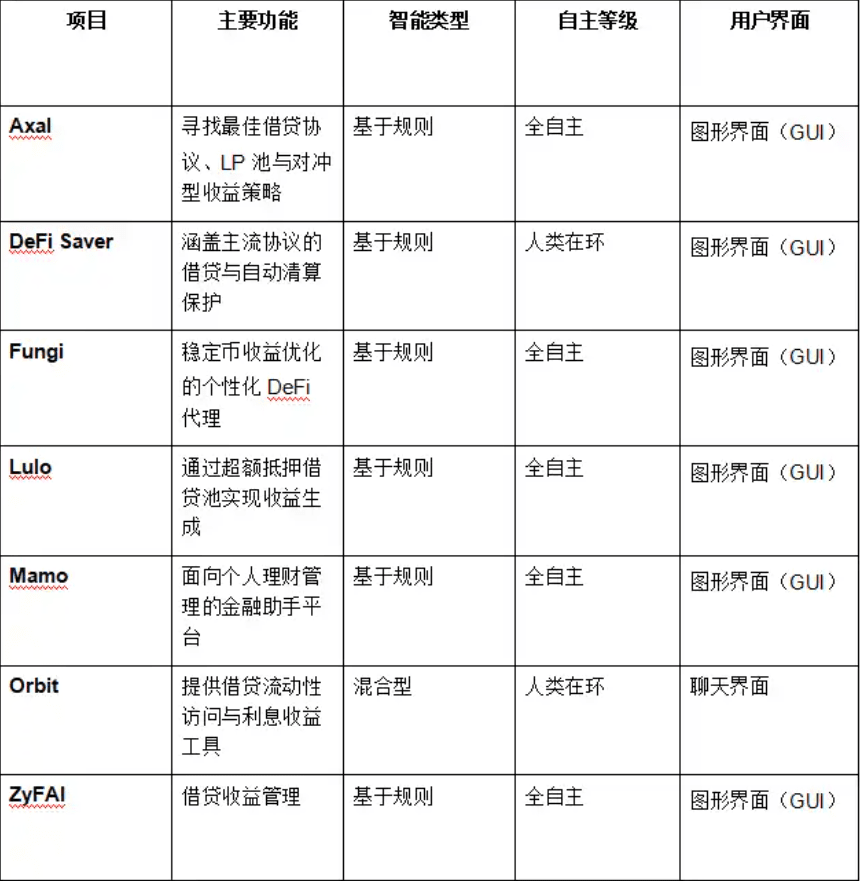
Prediction and betting agents
Prediction markets allow users to bet on the outcomes of future events, such as elections or sports events. These markets typically rely on real-time tracking of news or real-world information, which can change at any time. Prediction markets are naturally suited for agentic participation mechanisms, as emphasized by Vitalik Buterin in his proposed concept of InfoFi.
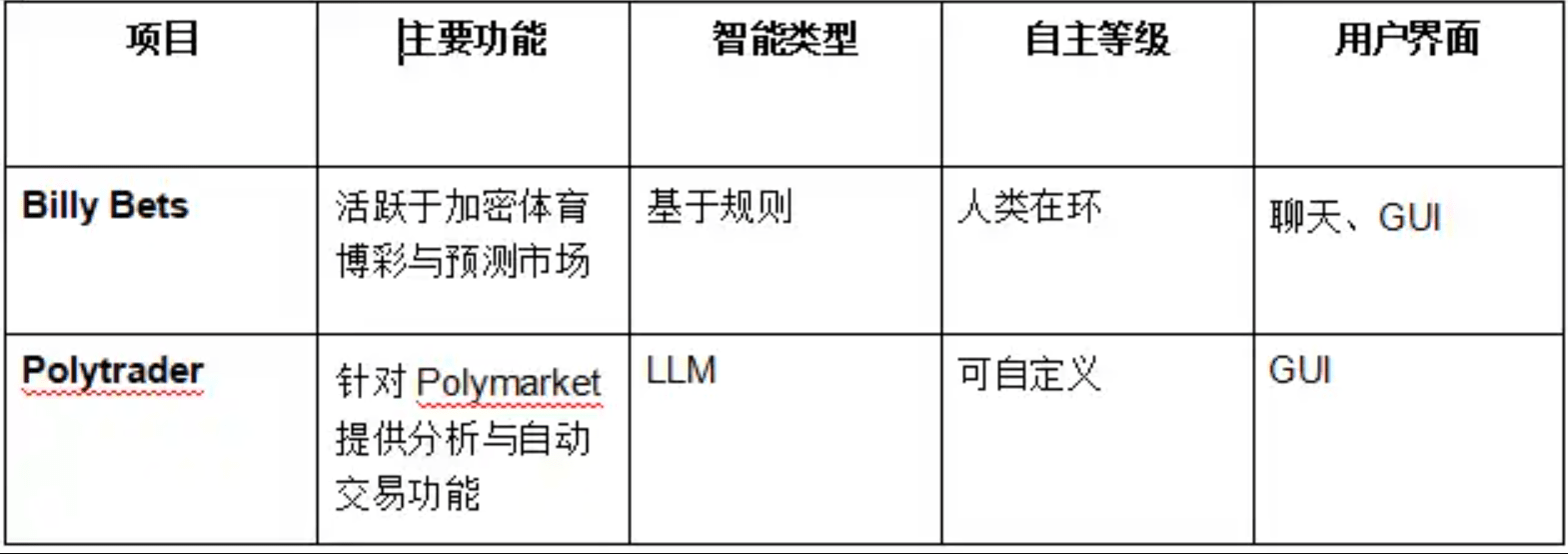
Sentiment, fundamentals, news, technical analysis agents
Investors typically rely on market analysis to determine 'what to buy' and sentiment analysis to judge 'when to buy or sell.' LLMs exhibit transformative value in such analyses: they not only greatly expand the scale and speed of analyzable data but also enhance contextual understanding, providing more comprehensive insights by identifying correlations between data sources.
Unlike the executable trading agents mentioned above, analytical agents only provide informational support and do not directly execute operations. Below are some representative projects:
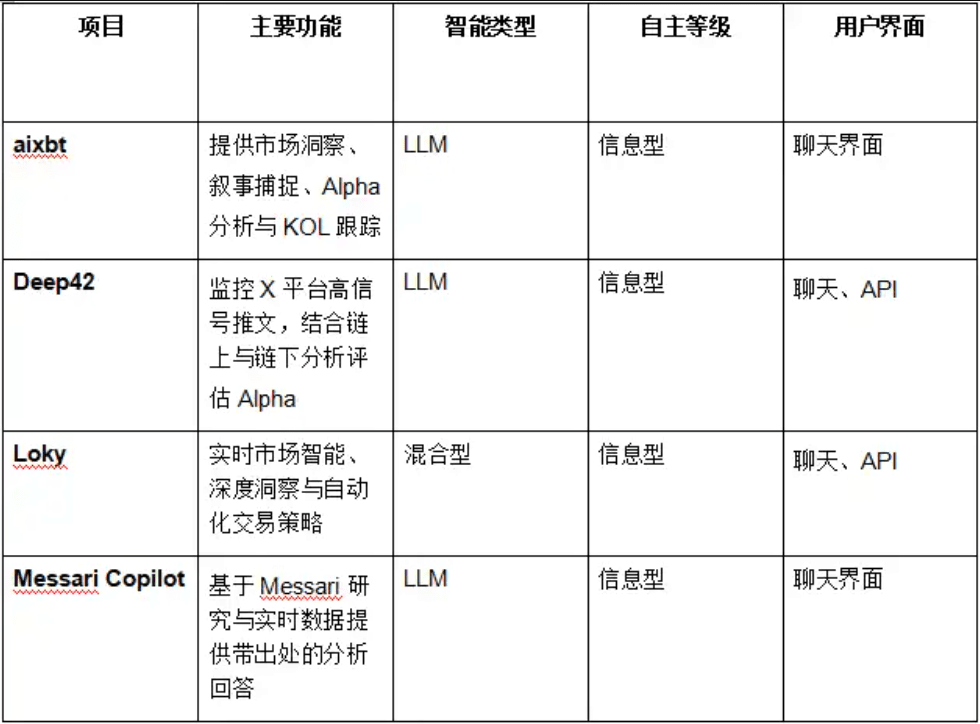
It is worth noting that the Agentic Finance ecosystem is rapidly evolving, and existing projects are continuously expanding their business boundaries. For example, a product currently classified as a lending agent may expand into liquidity management in the future.
Future trends of Agentic Finance
On-chain assets continue to grow, and the trading volume of on-chain stablecoins has reached a new high. Traditional fintech companies are also accessing on-chain infrastructure. For example, Robinhood recently launched tokenization services for US stocks, enabling 24/7 on-chain trading open to global investors.
The crypto industry is gradually transcending the narrative of 'speculative trading' and moving toward broader application scenarios that include investment functions.
However, for many users, there still exists a significant barrier to successfully participating in DeFi. This is precisely where agentic products come into play: they are expected to significantly enhance usability and profitability, becoming key to promoting the popularization of DeFi.
Agentic Finance is a brand new market segment, and the tools mentioned above are the first attempts in both TradFi and DeFi. We expect that some early projects may not realize their vision, but the overall ecosystem will continue to mature. Ultimately, using agents will become the mainstream method of financial participation, and those users who take the first step towards 'agentic finance' early on will be more likely to achieve long-term returns.
Furthermore, as developers continue to deliver stable returns, users' attention to the details of agent strategies will decrease. In the future, agents may further integrate multiple capabilities (such as managing trades and LP positions simultaneously) to enhance complexity and efficiency.

